


Preview
Material for Exam 4 - Spring 2004 |
||||||||||||||||||||||||||||||||||||||||||||||||||||||
| People
who live in coastal regions are familiar with a phenomenon called "Red
Tide". They may arrive at the beach one morning to find thousands of dead
fish and carnivorous aquatic mammals such as dolphins, and they may experience
a "choking" feeling as they breathe the air. Red tides are caused
by sudden blooms of several species of marine algae (single celled photosynthetic
organisms called dinoflagellates containing red pigments). Algal populations
during a bloom are so large (several million cells in each liter of sea water)
that the water appears red from the shore or from the air. Fish are killed
extensively during red tides because these dinoflagellates produce neurotoxins,
such as saxitoxin Depending upon the population densities of dinoflagellates
during a bloom, fish exposed
to lethal levels will die quickly, while others exposed to sub-lethal concentrations
may accumulate the toxins in their bodies. Marine molluscs such as clams and
oysters are not as affected by the neurotoxins themselves, but accumulate high
concentrations in soft tissues. Humans who eat molluscs containing high concentrations
of saxitoxin suffer from paralytic shellfish poisoning and present the following
symptoms: numbness in face and neck followed by respiratory difficulty, loss
of coordination and death from respiratory failure.
The following data might have been collected by a biologist studying red tide by taking daily samples of seawater in 1 liter bottles. Day cells/liter(in thousands) |
||||||||||||||||||||||||||||||||||||||||||||||||||||||
 source source |
||||||||||||||||||||||||||||||||||||||||||||||||||||||
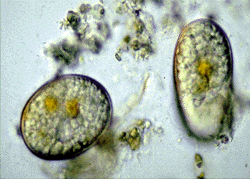 source source |
||||||||||||||||||||||||||||||||||||||||||||||||||||||
| In pea plants, the allele for red flowers is dominant over the allele for white flowers. When homozygous red-flowered snapdragons are crossed with homozygous white-flowered snapdragons, all the offspring have pink flowers. | ||||||||||||||||||||||||||||||||||||||||||||||||||||||
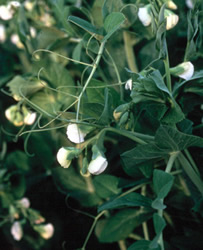 source source |
||||||||||||||||||||||||||||||||||||||||||||||||||||||
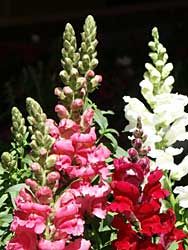 source source |
||||||||||||||||||||||||||||||||||||||||||||||||||||||
|
Scientists discover yet another overweight mouse that they name chunky. When they breed a chunky mouse with a homozygous normal mouse (i.e. a chunky X normal cross), the offspring are all normal. Analysis of circulating hormones in the blood of the mice results in the following summary data.
|
||||||||||||||||||||||||||||||||||||||||||||||||||||||
 source source |
Severe acute respiratory syndrome (SARS) is a viral respiratory illness caused by a coronavirus, called SARS-associated coronavirus (SARS-CoV). SARS was first reported in Asia in February 2003. Over the next few months, the illness spread to more than two dozen countries in North America, South America, Europe, and Asia before the SARS global outbreak of 2003 was contained. According to the World Health Organization (WHO), a total of 8,098 people worldwide became sick with SARS during the 2003 outbreak. (Source: CDC factsheet: Basic Information About SARS ) | 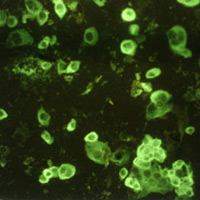 source |
||||||||||||||||||||||||||||||||||||||||||||||||||||
| Another major use of cholinesterase inhibitors is for treatment of myasthenia gravis, an autoimmune disease in which antibodies are formed against the acetylcholine receptor at the neuromuscular junction. The antibodies bind to acetylcholine receptors to cause a profound muscle weakness and paralysis. Cholinesterase inhibitors can alleviate the symptoms of myasthenia by increasing muscle strength and endurance. | ||||||||||||||||||||||||||||||||||||||||||||||||||||||
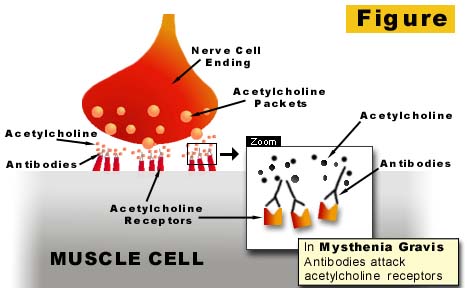 source source |
||||||||||||||||||||||||||||||||||||||||||||||||||||||
| In the current film “Kill Bill vol. 2,” Elle places a deadly Black Mamba snake into a suitcase full of money she is giving to Bud. She has no intention of actually giving the money to Bud because upon opening the suitcase, he is bitten twice in the face by the snake. As he falls to the floor and is gasping for air, Elle calmly lights a cigarette and tells him about the life cycle of the Black Mamba and the effects of its deadly neurotoxin, which causes paralysis. These are the last words Bud ever hears… | ||||||||||||||||||||||||||||||||||||||||||||||||||||||
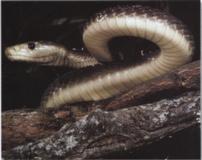 source source |
||||||||||||||||||||||||||||||||||||||||||||||||||||||
 source source |
||||||||||||||||||||||||||||||||||||||||||||||||||||||
 |
||||||||||||||||||||||||||||||||||||||||||||||||||||||
Some insects survive the winter months by allowing themselves to freeze at temperatures just below 0ºC (-1 to -3ºC). By allowing most of the fluid around their cells to freeze, insects protect their cells with an insulating layer of ice. However, water won’t become ice on its own. There have to be proteins that attach to water molecules allowing the water to easily form an ice crystal structure. Because only water molecules can join the growing ice crystals, solute builds up in the remaining unfrozen fluid surrounding the cells. The insects promote the growth of protective ice crystals by increasing the production and concentrations of proteins that help water molecules form an ice crystal structure. Interestingly, the insect does not produce all of these proteins on its own; bacteria that live in the gut of the insect produce some of the proteins. While many species of bacteria are found on the plants the insect eats, only three types produce these proteins and survive in the insects’ guts.
|
||||||||||||||||||||||||||||||||||||||||||||||||||||||
| To
achieve movement, an insect’s body temperature must be above 28ºC.
The Rain Beetle, which is an insect that lives along the coast of northern
California, can remain active year round, despite winter temperatures that
regularly hover above 0ºC. In fact, Rain Beetles achieve body temperatures
of 38ºC even when the ambient temperature is near freezing! It turns out
that the muscles these insects use for flying (called “flight muscles”)
are very inefficient and generate large amounts of heat as a byproduct of inefficient
cellular respiration. To raise their body temperature enough so that they can
fly, the beetles rapidly flex their flight muscles to generate the required
heat.
Unfortunately for the Rain Beetle, its flight muscles produce large amounts
of heat year round. Overheating can become a problem during warm summer months.
Fortunately, as the beetle flies, the rush of air created by the beating
wings keeps the beetle from overheating. |
||||||||||||||||||||||||||||||||||||||||||||||||||||||
 source source |
||||||||||||||||||||||||||||||||||||||||||||||||||||||
|
Sockeye salmon provide an excellent example of the life history of many anadromous fish. Anadromous fish live out most of their lives in ocean waters, but swim up rivers and small streams to spawn (mate and lay eggs). Adult salmon die after spawning; they do not return to the ocean. Thus, sockeye salmon both begin and end their lives in cool, gravel-bottom rocky streams, but spend several intervening years in the open ocean.
|
||||||||||||||||||||||||||||||||||||||||||||||||||||||
 source source |
||||||||||||||||||||||||||||||||||||||||||||||||||||||
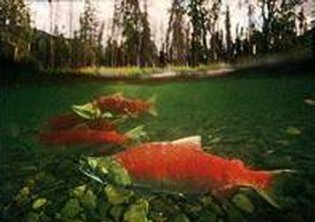 source source |
||||||||||||||||||||||||||||||||||||||||||||||||||||||
| From March through May, millions of songbirds migrate back to breeding grounds in the United States and Canada from wintering grounds in Mexico and Central America. Many of these birds will take off at night from the Yucatan Peninsula and fly several hundred miles non-stop across the Gulf of Mexico where they will arrive of the coast of Texas or Louisiana, often exhausted and emaciated, sometime in the late morning or afternoon the next day. Many birds do not make it: they could be taken by predators, go off-course and drown in the ocean, meet a head wind and be blown back out to sea, or simply not have laid down enough fat prior to their departure to fuel their entire journey. Most birds are remarkably adept at navigating (flying in the correct direction) across the Gulf and judging whether or not they are physically strong (that is, fat) enough to attempt the flight. The stakes are high; any birds that get these things wrong will die. | ||||||||||||||||||||||||||||||||||||||||||||||||||||||
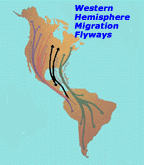 source source |
||||||||||||||||||||||||||||||||||||||||||||||||||||||